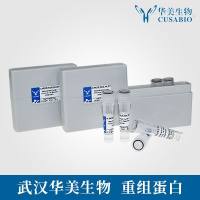Immuno-Laser Capture Microdissection
互联网
Microdissection of routinely stained or unstained frozen sections has been used successfully to obtain purified cell populations for the analysis of cell-specific gene expression patterns in primary tissues with a complex mixture of cell types. However, the precision and usefulness of microdissection is frequently limited by the difficulty in identifying different cell types and structures by morphology alone.
Limitation of Microdissection
- Immunostaining Followed by LCM
Therefore, our group is continuing to develop rapid immunostaining procedures for laser capture microdissection (LCM) and RNA extraction of frozen sections. This approach allows specific mRNA analysis of cell populations that have been isolated according to their immunophenotype or expression of function-related antigens. Thus, our ability to investigate gene expression in heterogeneous tissues has been significantly expanded.
- Advantages of Immuno-LCM
- Sections fixed in acetone, methanol, or ethanol/acetone give excellent immunostaining after 12 to 25 minutes total processing time.
- Specificity, precision, and speed of microdissection is markedly increased due to improved identification of desired (or undesired) cell types.
- The mRNA recovered from immunostained tissue is of high quality.
- Single-step PCR is able to amplify fragments of more than 600 bp from both housekeeping genes, e.g., beta-actin, as well as cell-specific messages, e.g., CD4 or CD19, using cDNA derived from less than 500 immunostained, microdissected cells.
- Fend et al )
|
Figs. A & B : Frozen sections of a reactive lymph node with a central follicle, stained with H&E (A) and immunostained for CD45RO (B). Immunostaining highlights T cells within the germinal center and in the perifollicular area and makes architectural features more evident. Magnification x100. Figs. C & D : Microdissection from germinal centers with spot sizes of 50 to 60 µm (C) and 15 to 20 µm (D) in diameter, as seen during LCM without coverslip. The smaller spot size allows avoidance of interspersed T cells. Magnification x100 (C) and x400 (D). Fig. E: Lymph node stained for the proliferation-associated antigen Ki67, using MIB1 antibody (dilution, 1:10) in conjunction with the Quickstain kit. Magnification x100. Fig. F : Prostate immunostained for cytokeratin. Stromal tissue has been removed by LCM, leaving behind the positively stained glands. Magnification x400. Figs. G to I: Microdissection of a single Reed-Sternberg cell stained for CD30 before (G) and after (H) removal. The isolated cell adherent to the membrane (I). Magnification x400 (G & H) and x1000 (I). |
Back to top
This method was successful in our lab using prostate tissue and for our specific objectives. Investigators must be aware that they will need to tailor the following protocol for their own research objectives and tissue under study.
Below is the first method published by the NCI Prostate Group for Immuno-LCM. After fixation, frozen sections are immunostained under RNase-free conditions using a rapid three-step streptavidin-biotin technique followed by dehydration. The immunostained sections are ready for LCM.







